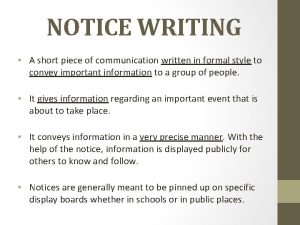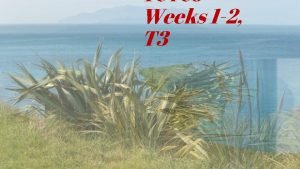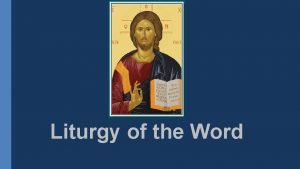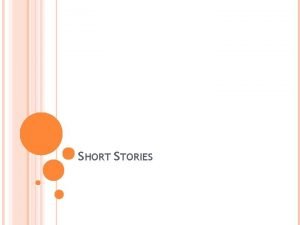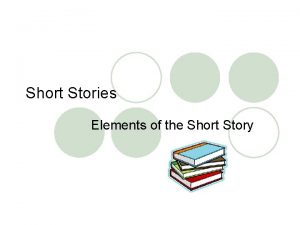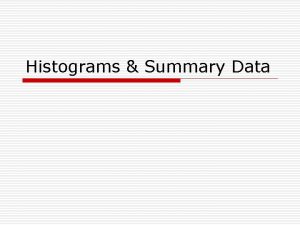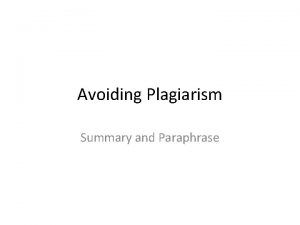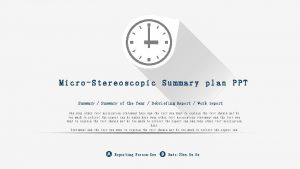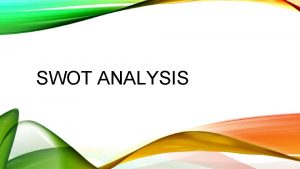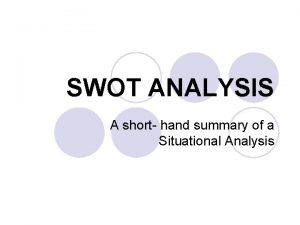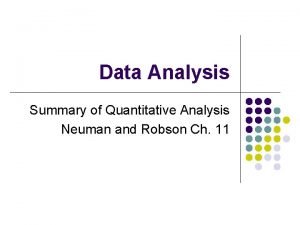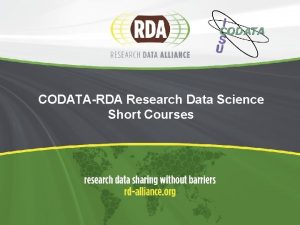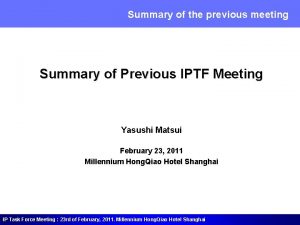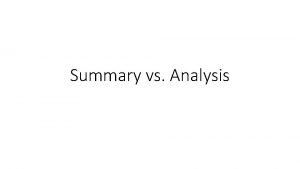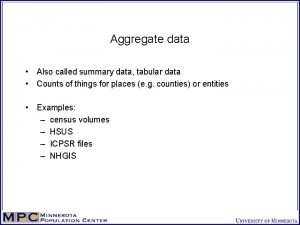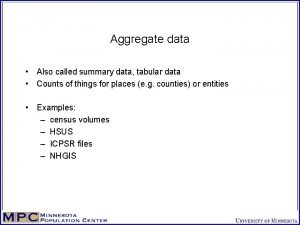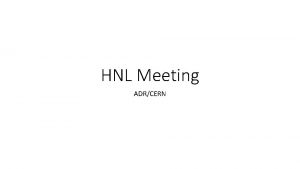A short Summary of the Data Analysis Meeting






















![Questions, Answers and Action Items II Problems with DAQS: [Ian, Martin, Karsten] 2001 Feb. Questions, Answers and Action Items II Problems with DAQS: [Ian, Martin, Karsten] 2001 Feb.](https://slidetodoc.com/presentation_image_h/0b2a82f3a2067e6fa79446d5fd1ddffa/image-23.jpg)


- Slides: 25

A short Summary of the Data Analysis Meeting, January 2001 Golm including a list of decisions and action items Copies of electronic presentations available on DC home page & GEO documentation server

Benno: Detector Status MCs and 1200 m cavity operative. 1 st monolithic suspension about to be installed. Full detector to be installed in 2001. See Bennos presentation Programming to be done: • Minute maker debugging • Frame viewer • Labview- DAQS connection (how to display 800 channels of data) • data transfer Hannover – Golm/K. Zuse • reduced data set + compression Data taking periods: 2 weeks July 2001 1 week October 2001 inf. >December 2001 no SR with SR

Martin Hewitson, Karsten Kötter: DAQS Problems: • # of channels limited • reflective memory (Ian: takes too long to adapt to GEO) • exchange processor (Pentium or faster BAJAcompatible ) • use more than one processor card • solve problem before beginning of April when DC starts • GPS time stamps • Reliable generation of frames • No frame viewer • Data storage limited to a few hours • Too much workload on Ian Taylor

Alicia Sintes: DC + data conditioning Goals: • develop detector noise model • Know detector resonances • Detector commissioning and subsystem understanding • stability of calibration • study of correlation of disturbances • Triggers, vetoes • Detector characterisation &data preparation pipeline • Analysis of engineering data • Implementation of TRIANA tools • Develop sophisticated tools (trend estimation tools) • Design of DC pipeline • Software librarian • DC documentation ? where does data preparation take place? Vetoes, line removal, calibration etc.

Benno Willke: data taking plans There already data available DC people, please come to the site to learn about the detector! Data taking plan: • DAQS will run all time once it is set up and detector is operative • Last 4 days always available on RAID system • Access policy will depend on demand • Status documented in „html“ database • Input from DC group needed to develop a final list of stored channels • List of detector channels (storage depth TBD) and environmental channels Action Items: • extraction of Labview channels out of frame files • setup data chain to access data • learn how to deal with Gbytes of data • attend DC workshop 26. Feb. – 2. Mar. in Ruthe

Uta Weiland: Detector Resonances Catalogue (available @ GEO documentation server) of resonances gives information on • Component or signal causing or showing oscillation • Frequency • Quality factor Include information about magnitude and stability of resonance frequency.

Karsten Kötter: data base • Database keeps track of DAQS status (which signals, resolution, sampling rate, gain, comments) • Detector status • Information is stored in frame files • Choosing frame file can be done via database Input into database: • detector status input by experimentalist via web interface • DAQS status automatically maintained by configman. Updated when changes take place Output of database: • Web interface for looking up data

Soma Mukherjee: Overview of tools for noise characterization I Simple and robust tools needed: • Trend estimation • Visual observation of large transients • Diagnostics: PSD • Line discriminator • Transients not obvious to the eye: Spectrogram (S(f), t) • Density estimation: Histograms, Kernel est. , Hypothesis testing (chi^2) • Channel correlation: Cross correlation, Coherence • Data in a single band: Bandpass filter, heterodyning Line removal tools: Coherent line removal (Matlab & C, offline), kalman filter (Matlab), adaptive line enhancement (Matlab, LAL), cross channel regression [frequency or time domain](C, Matlab), median based line tracker(Matlab, offline), multi taper (GRASP), resampling based harmonic removal (C++).

Time Series Analysis Output will be non-stationary over long periods of time. Need to achieve better resolution in est. of power spectral density -> Auto. Regressive Moving Average (ARMA) models • No limits on frequency resolution • Can be made adaptive • Study evolution of ARMA coeff. as indicator for nonstationarity Discussion on why lines should be removed? Lines of detectors within the same mains system could cause correlations between detectors. Database (cross linked to Utas data base) of removed lines and affected frequencies and trends in the lines removed. Test data analysis to see whether line removal is necessary and does not harm the data.

R. Balasubramanian: Overview of Tools for noise Characterization II • Time-Frequency methods • Signal track search (Detector for quasiperiodic bursts) (LAL code) limited to a few sec by computational needs N^2 log(N) • Power monitoring • Inter channel correlations • Wavelet transforms

Soumya Mohanty: DC pipeline Need automated tools pointing out interesting segments (i. e. changes in PSD, Transients) to handle large amounts of data. Not for commissioning stage. 2 types: • DC pipeline • data preparation/conditioning pipeline Pipeline design has to investigate cross coupling effects between pipeline subsystems Design status: tools identified, computational costs and statistical characterisation can be studied. Pipeline design will affect planning of other data analysis components Concrete design exists: Lined out candidate pipeline (available on web page) Several candidates have to be compared Requirements: -Fast enough to work online -Language: C++(LDAS, DMT, VEGA), Java (TRIANA) -Database: depends on data mining tasks requirements -Close co-operation with experimentalists required Almost all available in matlab (TBC) Use sequential files instead of relational database To test implement as a large matlab program then transfer to C++ or TRIANA Develop metrics of performance Test against sim. and real data Requires additional manpower to get ready in time (i. e. for the data taking test runs in Ruthe)

Discussion: Alicia Goals of session: Define and assign tasks, deadlines, telecon dates&groups, FAQS , expectations from theorists and experimentalists Tasks: • DAQS workshop Feb. 26 th -March 2 nd: define specific goals • Need coordinator who sets specific tasks and monitors progress? • Harry: visualization of data very important, e. g. comparison of historical to current data. • Bernard: most basic tools are available in TRIANA or can easily be built from existing blocks. (but exp. have to learn how to put them together) • Sathya: Experimentalists should prepare wishlist in this workshop • prepare beforehand: minute reader, TRIANA GEO(raw+frame)-reader • Analysis of GEO data: analysis of different sets of data for specific noise sources, correlations or misbehaviour. • Detector debugging and commissioning tools • Implementation of tools needed into TRIANA • Development of sophisticated tools for data based diagnostics • Pipeline design • Software librarian • Maintain DC documents: put onto GEO documentation server • Catalogue of expected detector signatures • Signatures found in the data of terrestrial or instrumental origin • Compendium of problems and solutions • Software doc Milestones: Pipeline ready for July data taking (in Matlab)

Bernard Schutz: CW search summary Coherent search : Efficient code existing that can cover about ½ day for about 10^5 points over the sky. Highly parallel as frequ. Segments are distributed to diff. Processors, i. e. designed to work on clusters of PCs. Alicia: Hough transform (incoherent) first code running in individual pieces. Still too slow. Designed other more promising algorithm. Code in C not LAL. Hough transform produces candidates over long periods of time. Use coherent search for good candidates. Best use two different non-optimal incoherent algorithms and only use common candidates for coherent search. On the whole: programs well on the way. Important to keep # of gaps in data stream low. Need more info on the influence of gaps onto data quality. Periodic failures are worst. Alberto is building up catalogue of all possible sources.

B. S. Sathyaprakash: Status of binary inspiral and merger search software Merger phase only important for BH binaries Prospect of detecting Binary BHs: S/N about 5 @ optimum masses (~70 M ) of BHs 15 M , 15 M @ 100 Mpc detectable with S/N~3 Post Newtonian approximation does not converge well enough. Go to P-approximants. P 5 (P-approximant to 2. 5 PN order) will be used for the filters. Including merger phase does significantly (factor order 1. 5 -2) increase S/N in upper mass range > 20 M Inclusion of quasi-normal ringing after merging does not help much. Requires accurate knowledge of merger phase waveforms. # of wave templates to be used decreases with mass as merger frequency goes down. -> BH bins may be observable (1 -2/y) by initial network • • Codes in LAL format, which is 4 times slower than Ccode T- and P- approximants ready for point-mass circular orbits Eccentric orbits & BD waveforms= almost ready Spinning binaries need more research. No software yet

Soumya Mohanty: Issues in GW bursts detection • Transient tests – Several tests available – Thorough comparison required – Criteria for comparison • • • Receiver operating characteristics Robustness against noise model Robustness against signal model Computational requirements Establishing confidence in detection – What level of confidence required? What false alarm rate? – False alarms: terrestrial burst, non stationary noise – Improving confidence: • Coincidence with other detectors • Coincidence with astronomical events (time delay not known a priori) use dedicated robotic wide-field telescopes to try to verify signal • Anti-coincidence with auxiliary channels – False alarm rate for aux. Chan‘s could be high • Upper limits – – • Rate at a certain S/N Max S/N in certain class of bursts Combining upper limits with coincidence analysis Important to characterize background noise Detector Characterization – Instantaneous detector status required – Characterization of rate and amplitude distribution of terrestrial bursts required for upper limit calculations

Sukanta Bose: Network search for binaries No notes taken

John Zweizig: LIGO global diagnostic system Hard/soft-ware support for detector characterization • Diagnostic test tool (DTT) – Direct measurement of TFs – Injecting calibration signals – Passive measurement of standard quantities (replaces Spectrum analyser etc) • Data monitoring tool (DMT) – – – Detect and tag known signals and disturbances Find & record transients Measure and summarize running status Notify operators of faulty states Support interactive testing and diagnostic

Alberto Vecchio: Distributed computing Harnessing otherwise unused CPU cycles for GEO Developing necessary tools (workstations, PCs[Windows, Linux]) Goal: Simple matched-filter based analysis software ready by end 2001. Hot research area in high-performance computations Keep data sets short enough for low data flow 1 Steps: Simple searches on computer-grid we learn how to do reduce workload on dedicated machines (Beowulfs) start implementing simple searches fro more complex signals (Sco X-1, pulsars in binaries) Status of building blocks: data base +, splitter -, server+, client Target: harness at least 300 machines (100 AEI, 200 GEO/Golm campus) Compare to Entropia: commercial company looking for outstanding scientific projects to be supported for free

Ed Seidel: the European-grid Computational resources scattered across the world How to take advantage of ? Resources: E-grid (www. egrid. org) virtual Organisation Goal: – – completely automated management system distributing computations in an optimised way Allows to launch and monitor job from all kinds of communication devices Potential applications: • Cactus computational toolkit (www. cactuscode. org) • SARA • GEO wave analysis Projects today: • Entropia (www. entropia. com) creating worlds largest Computing Service PFlops and Pbyte resources in a few years (300 Mio PCs today) • 10% reserved for commercial applications, rest for free for „right kind“ of projects • Gri. Phyn • Euro. Grid • Data. Grid (http: //grid. web. cern. ch/grid/new_home. htm) • Egrid proposal

Alberto Vecchio: Stochastic background Requires cross-correlation between two detectors Observational limits: GEO + one other detector does currently not improve limits known from nucleosynthesis Although sensitivities do not look very promising to get new upper limits make sure data are investigated with respect to stochastic background Set up GEO stochastic background group. LSC stochastic sources upper limits group to be joined by GEO people (incl. DC experimentalists) So far Alberto, Bernard, Sukanta in the group

Bernard Schutz: Triana Tutorial • • • TRIANA developers learned a lot about JAVA which avoids some constraints that formerly caused problems Speed of compiled JAVA code about factor of 2 below C++ code Wealth of functionality already implemented. Provides tools to ease programming of new units. Usage on site for DC and optimisation will show well it performes to the needs of experimenters and which additions are needed Speed up grapher, implement scrolling of time displays, holding graphs for comparison, implement some more controllable features for visualizing, comparing etc. Needs will be defined @ DAQS workshop @end Feb. Implementation of C code foreseen @ high priority Look into TRIANA running under LINUX Set up webpage for bug-reports (automated? ) and wishlists Someone in every group needed who can program units Programming of FRAME READ (Ruthe and local) highest priority Latest TRIANA version can be obtained from Ian Taylor

Questions, Answers and Action Items I • Calibration: Photon drive generated comb of peaks, frequencies TBD : software side? [Harry, Martin, ? ] July 2001 • • • Coatings of SR mirrors: cover all operational modes incl. much lower thermal noise. Control issues? Order asap. [waw, kas] Add radio antenna in Ruthe receiving Crabs or other pulsars radio signals to check whole data chain (DAQS, data analysis)? [Graham] info @end Jan. Operational mode (narrow/broad, centre frequency)? : – Crab – 1987 A(930 Hz? ) – Sco X-1(S/N=3 -4 in 2 y, 550 Hz. GW), operational mode will depend on thermal noise achieved. Need more knowledge on Sco. X-1. We know what we do with Crab, but not what with other two. No conclusion, no path towards, until noise behaviour of GEO measured
![Questions Answers and Action Items II Problems with DAQS Ian Martin Karsten 2001 Feb Questions, Answers and Action Items II Problems with DAQS: [Ian, Martin, Karsten] 2001 Feb.](https://slidetodoc.com/presentation_image_h/0b2a82f3a2067e6fa79446d5fd1ddffa/image-23.jpg)
Questions, Answers and Action Items II Problems with DAQS: [Ian, Martin, Karsten] 2001 Feb. • # of channels limited Ø reflective memory (Ian: takes too long to adapt to GEO) Ø exchange processor (Pentium or faster BAJA-compatible ) Ø use more than one processor card Ø solve problem before beginning of April when DC starts • GPS time stamps • Frame writer unstable • No frame viewer • Raw-data storage unstable [Rob]

Questions, Answers and Action Items III • DAQ workshop Feb. 26 th – March 2 nd (tasklist prepared by DC group) • Sun Enterprise 250 software installation & config (Roger Philp) • Tape drive installation & test (Roger Philp? ) • Security settings & firewalls (bfw, adf, Oliver Wehrens, Roger Philp, P. Fayers ) <7. 2001 • Software: - Minute maker debugging - Frame reader - Labview-data (how to display 800 channels? ) TRIANA unit, hierarchical access [Ian, Harry] - Data transfer Hannover – Golm/K. Zuse (>mid 2001) [Bernard], Cardiff (mid Feb) [Sathya] - Reduced data set, incl. h(t) + compression [DCgroup] (<7. 2001) set up data chain to access data (<7. 2001) [executive comm. ] learn how to deal with GBytes of data - Pipeline ready for July data taking (in Matlab) [DCgroup] - Organization of data analysis programs -> supervisor program: TRIANA/UNIX [Balasubramanian] (report in 1 month) - Data base required that all codes can refer to (requirements, action items, responsibilities) [David Churches] (report in 1 month) - Try to use available DMT (subsystems) -> DC group - Try to use same (tested) codes for DC and data analysis

Questions, Answers and Action Items IV Software continued (DC): - Implementation of TRIANA tools (triana-geobug@egroups. com, triana-geo-wish@egroups. com ) - Develop, implement sophisticated tools (trend estimation tools) - Software librarian - DC documentation [DC group] (as it evolves) • • • Catalogue of resonances (available @ GEO documentation server) [Uta Weiland] Database keeps track of DAQS status (automated via configman) and detector status (Web interface) [Karsten, Martin] Distributed computing: Decisions required, some proposal deadlines close in time [Alberto et al. , executive comittee (<1 week Entropia), (long term e. Grid)] There already data available Data taking periods: 2 weeks July 2001 no SR 1 week October 2001 with SR inf. >December 2001
 Short short short long long long short short short
Short short short long long long short short short For today's meeting
For today's meeting Today meeting or today's meeting
Today meeting or today's meeting What is meeting and types of meeting
What is meeting and types of meeting Types of meeting
Types of meeting Notice in english
Notice in english Whakataka te hau lyrics
Whakataka te hau lyrics Opening prayer
Opening prayer Hình ảnh bộ gõ cơ thể búng tay
Hình ảnh bộ gõ cơ thể búng tay Frameset trong html5
Frameset trong html5 Bổ thể
Bổ thể Tỉ lệ cơ thể trẻ em
Tỉ lệ cơ thể trẻ em Gấu đi như thế nào
Gấu đi như thế nào Tư thế worms-breton
Tư thế worms-breton Chúa yêu trần thế alleluia
Chúa yêu trần thế alleluia Môn thể thao bắt đầu bằng chữ f
Môn thể thao bắt đầu bằng chữ f Thế nào là hệ số cao nhất
Thế nào là hệ số cao nhất Các châu lục và đại dương trên thế giới
Các châu lục và đại dương trên thế giới Công thức tiính động năng
Công thức tiính động năng Trời xanh đây là của chúng ta thể thơ
Trời xanh đây là của chúng ta thể thơ Mật thư tọa độ 5x5
Mật thư tọa độ 5x5 Làm thế nào để 102-1=99
Làm thế nào để 102-1=99 Phản ứng thế ankan
Phản ứng thế ankan Các châu lục và đại dương trên thế giới
Các châu lục và đại dương trên thế giới Thơ thất ngôn tứ tuyệt đường luật
Thơ thất ngôn tứ tuyệt đường luật Quá trình desamine hóa có thể tạo ra
Quá trình desamine hóa có thể tạo ra





